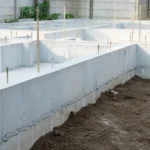We talk about the features of the Finnish foundation and tell you how to lay it yourself.
What is the Finnish foundation
A not-too-expensive universal foundation that would be suitable for any soil, heavy and not very heavy walls – a builder’s dream. One of these foundations is Finnish (a conventional name adopted among our builders). In short, it is a shallowly buried strip with ground floors and an insulated blind area. Let’s talk in more detail about how such a foundation is built, and why it is considered one of the best solutions for low-rise construction.
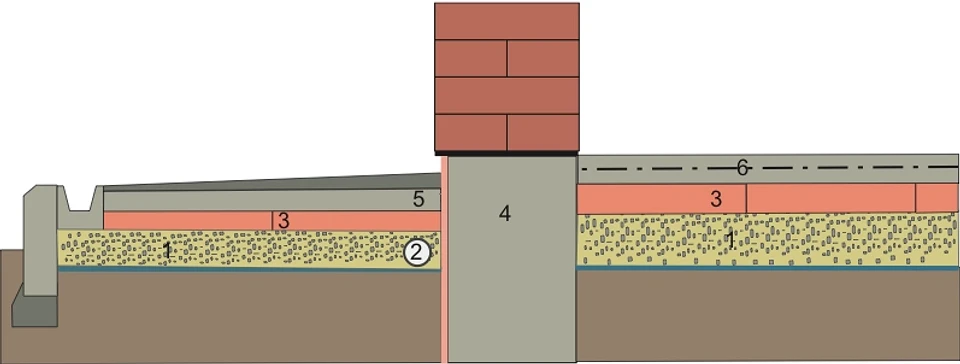
1 – layer of sand gravel on geotextile; 2 – wall drainage; 3—EPS boards; 4 – reinforced concrete strip; 5 – blind area with a slope-forming layer; 6 – reinforced concrete slab (screed).
Advantages of the Finnish Foundation
An ordinary shallow tape is subject to the forces of frost heaving. Theoretically, it should rise evenly in winter, and after the soil thaws, it should also fall evenly. Here are just small differences in the load (for example, if one part of the building is lower and, accordingly, lighter than the other), as well as quicksand often leads to the fact that the tape settles into the ground with distortion or becomes deformed (if the reinforced frame cannot withstand). As a result, the building tilts or cracks appear in the masonry above the openings. In the Finnish version, the insulated blind area prevents the ground from freezing and the foundation does not “float”, so distortions are excluded.
With a conventional strip foundation, as a rule, a beam ceiling of the first floor is erected. Even with good underground ventilation, it deteriorates quite quickly. The service life of the structure usually does not exceed 30 years. In the Finnish version, concrete floors are laid on the ground – they are almost eternal.
The concrete base of the floor simplifies the installation of a water-heated floor. This system, combined with a massive slab with significant thermal inertia, ensures maximum living comfort in winter, and in summer such floors keep cool and allow you to save on air conditioning.
Device technology
First (of course, after removing the turf and leveling the construction site), they dig a trench no more than 40 cm deep and add 15-20 cm of sand and gravel to its bottom. Next, a reinforced concrete strip is poured with a total height of about 600 mm and a width of 300-400 mm (depending on the design thickness of the walls). On very “favorable” soils (dry sand), the tape is laid out from foundation blocks.
After this, a thick sand or sand-gravel cushion is placed in the space limited by the tape. It is laid in layers, each of which is carefully compacted. Then a slab is poured (in this case it is often called a screed), usually 120 mm thick, reinforced with a single-level frame made of a rod with a diameter of 12-14 mm. Usually, water-heated floor pipes are embedded in this slab, which is brought to the zero level of the building.
The final stage is the installation of a blind area more than about 1.5 m wide, insulated with slabs of extruded polystyrene foam and reinforced road mesh.
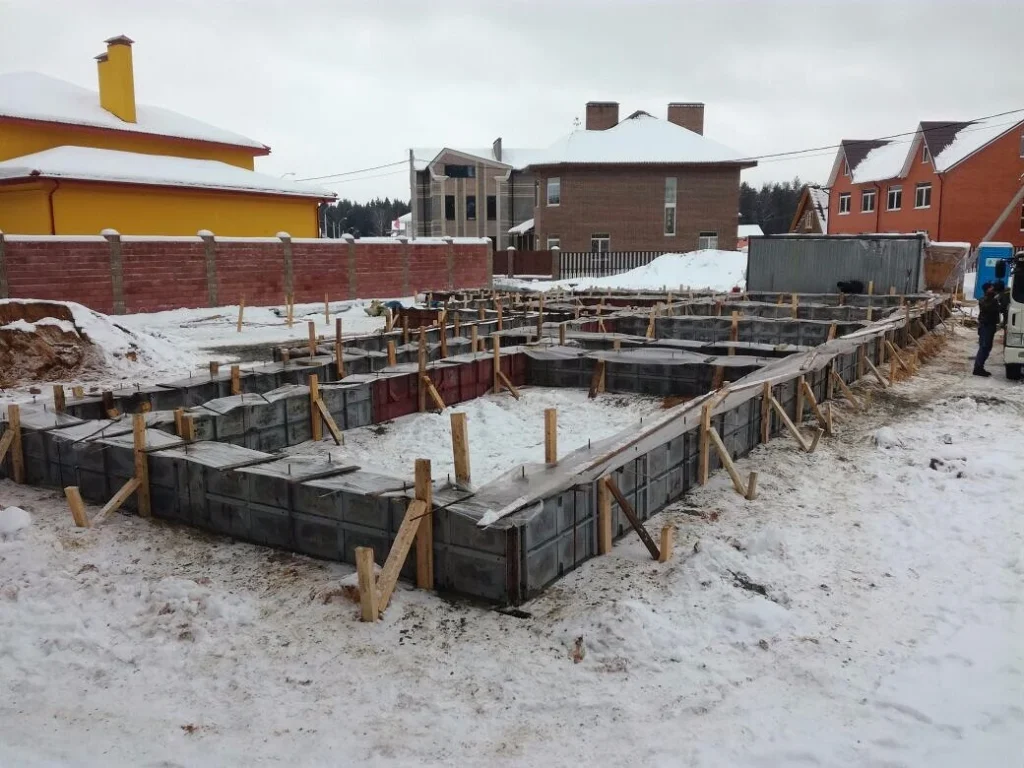
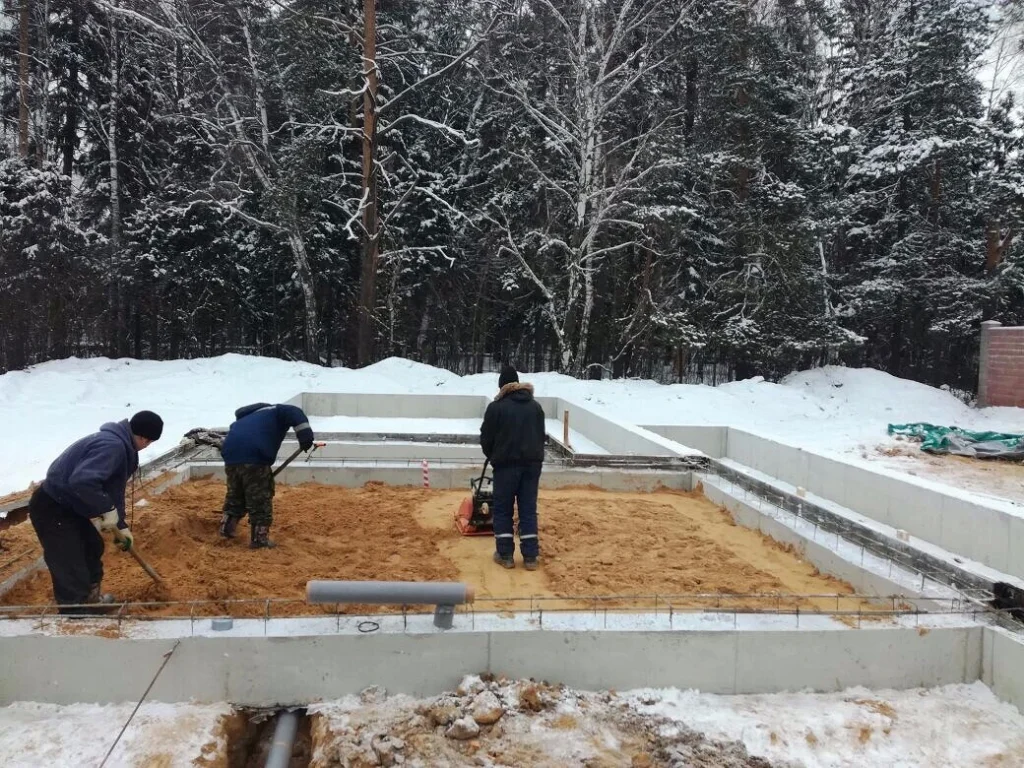
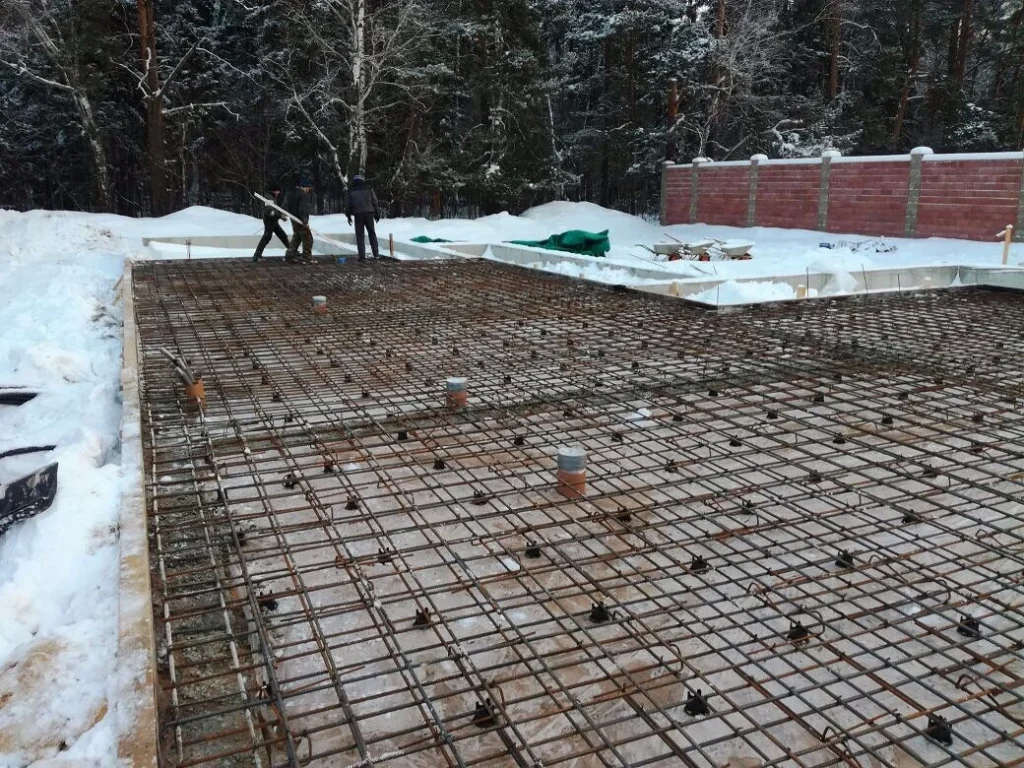
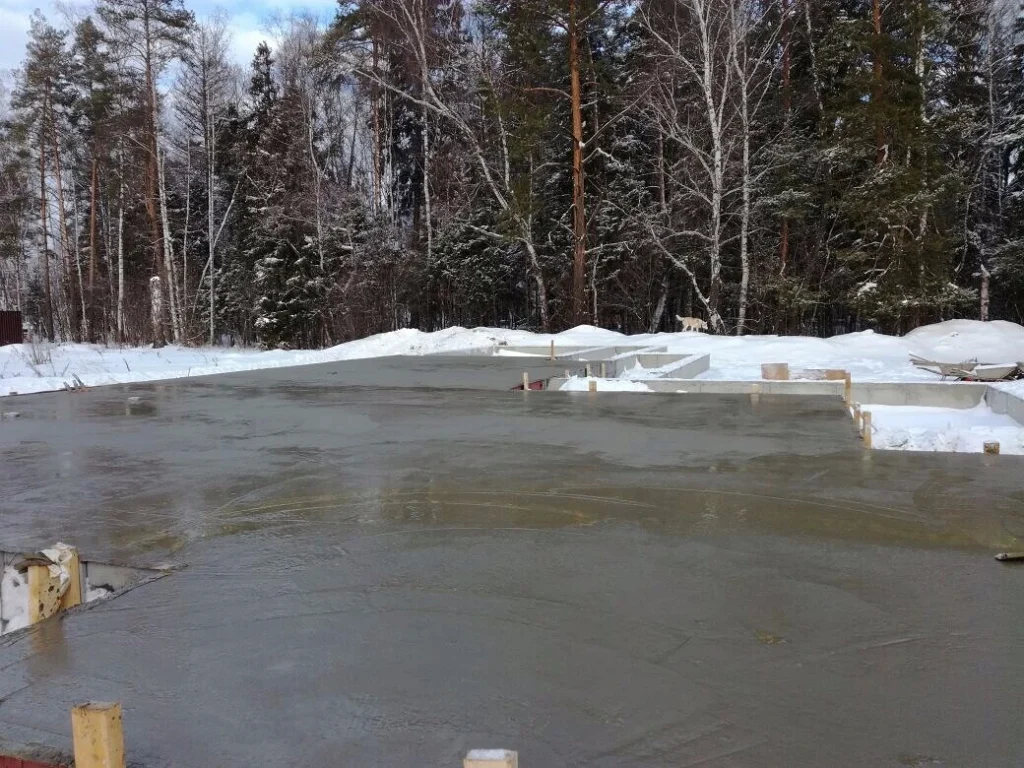
Read more: Foundation base and types of soils


